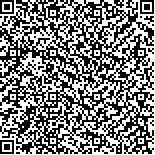沈芳,刘虎,顾旭东,曾明,傅建明,王晶,崔尧,朱美红.动作观察疗法对缺血性脑卒中患者上肢运动功能恢复的影响[J].中华物理医学与康复杂志,2017,39(3):184-188
扫码阅读全文

|
| 动作观察疗法对缺血性脑卒中患者上肢运动功能恢复的影响 |
|
| |
| DOI: |
| 中文关键词: 动作观察疗法 缺血性脑卒中 镜像神经元 上肢运动功能 功能性磁共振成像 |
| 英文关键词: Action observation Ischemic stroke Mirror neurons Upper extremity function Rehabilitation Functional magnetic resonance imaging |
| 基金项目:浙江省嘉兴市科技计划项目(2014AY21031-9);国家自然科学基金资助项目(81201504);浙江省自然基金资助项目(LY12H17004) |
|
| 摘要点击次数: 3967 |
| 全文下载次数: 5852 |
| 中文摘要: |
| 目的探讨动作观察疗法对缺血性脑卒中患者上肢运动功能恢复的影响,同时利用功能性磁共振成像(fMRI)技术分析该疗法对患者运动相关脑皮质功能的影响。 方法采用随机数字表法将40例缺血性脑卒中患者分为观察组及对照组,每组20例。2组患者均给予常规康复干预,观察组患者在此基础上辅以动作观察疗法,共治疗8周。分别于治疗前、治疗8周后采用Fugl-Meyer运动功能评分法(FMA)上肢部分及Barthel指数(BI)对2组患者上肢运动功能、日常生活活动(ADL)能力进行评定。在治疗前对2组患者进行fMRI检查,并对治疗结束2个月后9例观察组患者及8例对照组患者(该期间2组患者均继续相应治疗)再次进行fMRI检查。 结果治疗8周后观察组及对照组患者上肢FMA评分[分别为(28.00±7.89)分和(21.95±5.99)分]、BI评分[分别为(76.50±11.36)分和(65.50±12.96)分]均明显优于治疗前水平(P<0.05);进一步分析发现,治疗8周后观察组患者上肢FMA评分亦显著优于对照组水平(P<0.05),但BI指数评分组间差异则无统计学意义(P>0.05)。治疗结束2个月后通过fMRI检查发现,观察组患者在观看动作视频时其双侧中央前回、顶叶及辅助运动区激活程度均较治疗前及对照组明显增强(P<0.05),而对照组患者在观看动作视频时其大脑区域激活情况较治疗前无明显规律性、实质性改变。 结论基于镜像神经元理论的动作观察疗法可改善缺血性脑卒中患者上肢运动功能,提高ADL能力,其治疗机制可能与增强镜像神经元系统兴奋性有关。 |
| 英文摘要: |
| Objective To explore the effects of action observation therapy on upper-extremity motor function after ischemic stroke and on the motor cortex using functional magnetic resonance imaging (fMRI). Methods Forty patients with ischemic stroke were randomly assigned to an observational group (n=20) or a control group (n=20). Both groups received conventional rehabilitation, while the observational group was additionally provided with action observation therapy for 8 weeks. Both groups were assessed using the Fugl-Meyer assessment (FMA) and the Barthel index (BI) before and after the 8 weeks of treatment and functional magnetic resonance imaging was performed before treatment. Two months after the treatment, nine patients of the experimental group and 8 of the control group who continued to receive their respective treatments after discharge were again assessed using functional magnetic resonance imaging. ResultsAfter the treatment the average FMA score and BI score of both the observational group and the control group had increased significantly. The increase in the average FMA score of the observational group was significantly greater than that of the control group. However, there was no significant difference between the two groups in the increases in BI score after 8 weeks of treatment. The fMRI results showed that there was a significantly greater rise in activity in the bilateral precentral gyrus, parietal lobe and the supplementary motor area of the patients in the observational group after the treatment compared with the control group. Conclusion Action observation therapy can improve upper extremity motor function and performance in the activities of daily living after ischemic stroke and induce changes in the excitability of the cerebral motor cortex. |
|
查看全文
查看/发表评论 下载PDF阅读器 |
| 关闭 |